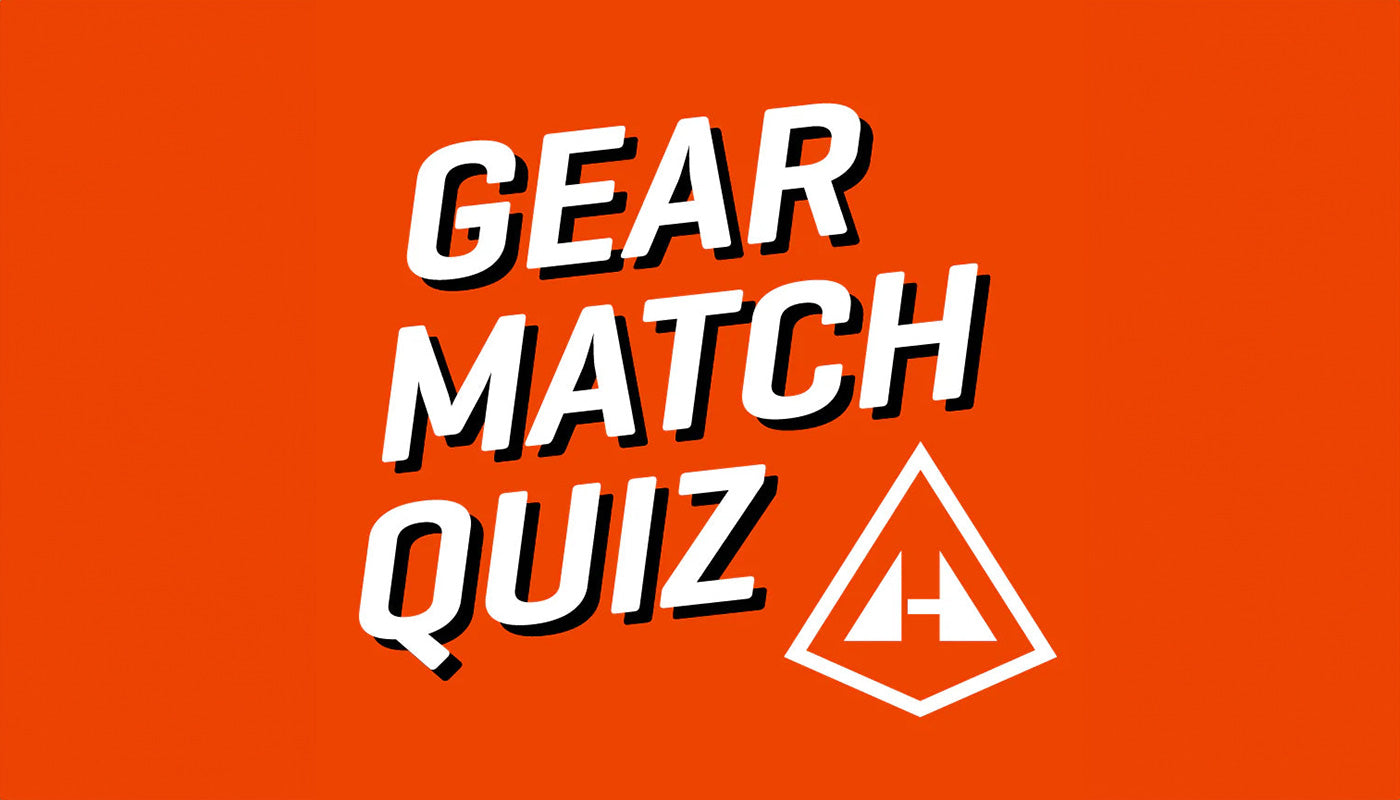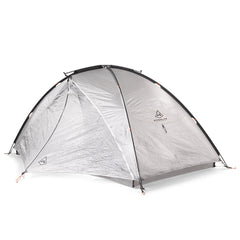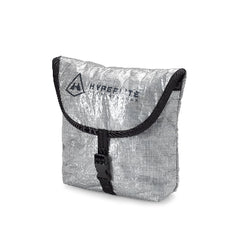If you’re the type of person that can fall asleep anywhere, or you have a propensity to push yourself in your chosen pursuits until you can fall asleep anywhere, you might not give much attention to sleep pads. That doesn’t mean you shouldn’t! A good sleep pad can help provide actual rest – a need as critical as any other piece of gear – as well as insulation from the cold ground. Arguments can be made for air mattresses or closed-cell foam, so we’ll let our panelists make them.
MIKE ST. PIERRE
HYPERLITE MOUNTAIN GEAR // CO-FOUNDER + CEO
You have two options here: a foam pad – the lighter of the two, or an inflatable mattress. There are tradeoffs for both. An inflatable mattress is much more comfortable, provides better insulation against the ground, but there’s a higher risk of punctures. I’m not a fan of foam pads as they are hard and cumbersome to pack. They’re also nowhere near as comfortable as an inflatable mattress as you tend to feel the ground beneath you.
“IT’S ABSOLUTELY INTEGRAL TO THE SUCCESS OF MY TRIP THAT I GET A GOOD NIGHT’S SLEEP WHEN I’M HIKING HUNDREDS OF MILES. LUCKILY, THE LATEST TECHNOLOGY HAS BROUGHT US THE ULTIMATE IN LIGHTWEIGHT, AND SUPER COMFORTABLE SLEEPING GEAR.” // MIKE ST. PIERRE
Fixing a hole in an inflatable mattress is easy as long as you have water nearby. If I need to find a hole, I’ll blow it up as much as possible, and fold the inflated pad in half to create more pressure inside. Sometimes you’ll be able to hear where the pinhole is once you begin to squeeze. If that isn’t enough, and if it’s possible where you are, submerge the pad in a calm body of water until the bubbles reveal the puncture. If you don’t have that much water nearby, you can pour a mug of water over the pad until you find the hole. Add some camp soap to your water before you pour it – it will make finding the hole that much easier. Once found there are many products you can use to patch it. Duct tape might be enough or carry the manufacturer’s recommended patch kit. I’ve used Tyvek tape or a little seam grip. They all will do the job.
Stick with a simple design – no fancy cutouts, strange shapes, or special inflation systems. All of these will eventually present problems.
OUR SLEEPING PAD PICK(S): Therm-a-Rest NeoAir® XLite® or Therm-a-Rest NeoAir® Uberlite™
You can't really go wrong with any of the NeoAir sleeping pads from Therm-a-Rest, but the XLite and all-new Uberlite are our go-to choices. They're simple, lightweight, and the construction techniques are built on years of dedication to the craft. The Uberlite is new to the scene, but so far it's looking like it will be replacing my XLite for any trip where going as light as possible is the priority.
OUR PILLOW PICK: Stuff Sack Pillows
A pillow is an important piece of gear. Getting a good night sleep in the backcountry can sometimes be difficult even when you’re dead tired. In my opinion, I want to stack the deck as much as possible. By having a dedicated pillow, and one you like, you’ll be able to avoid looking around looking for something like a smelly shirt or jacket to lay your head on. I’ve tried everything from inflated water bladders to my shoes. A dedicated pillow is an investment worthwhile.
Now, a dedicated pillow that is also highly water-resistant and can keep my puffy jacket dry in my pack or as I’m packing my pack in the rain is an even better pillow.
I store my puffy jacket in my Stuff Sack Pillow. I do this for several reasons. One, this reversible pillow is extremely water-resistant, and I’ve never ended up with wet contents using it. During the day, the pillow is right side out to protect the inside fleece lining and my puffy, and at night I turn it inside out, stuff my puffy into it, and I have a squishy fleece lined pillow. I also keep my puffy in the pillow for efficiency sake. When you get to camp, it’s easy to grab if it’s getting cooler and you need an extra layer. I’ll unpack my bag pulling out my shelter and start setting that up, and if I need an extra layer, the puffy is right there in my pillow. Once I get the shelter set up and blow up my pad, I’ll pull out my sleeping bag to let it start to loft and throw my pillow in the tent. After dinner and once I’m ready for bed, if I’m still wearing my puffy, I can crawl into my sleeping bag, start to warm up and then take the jacket off and stuff it into the pillow which is right there. In the morning, if it happens to be chilly, I can grab my pillow, pull out the puffy, and I’m ready to get out of the tent and start my morning.

LUC MEHL
PACKRAFTER // EXPLORER // ALASKAN // THINGSTOLUCAT.COM
I don’t think there is any competition to the Therm-a-Rest NeoAir lineup. The winter pad has an R-value of ~4, which is sufficient to not feel any cold spots during the night. My favorite unorthodox application for the NeoAir was building a raft for a river crossing (pics available!). The pads do develop leaks, and eventually I can’t find the leaks. I get about three years per pad.

MATT MORELLI
THRU HIKER // PHOTOGRAPHER // @WHERETHEHELLISMATT
I am a recent convert to inflatable pads. I put 2,000 miles on the same four feet of Therm-a-Rest’s Z Lite, and I had no complaints. I never had to worry about popping it and I never got cold sleeping on it. Sure, I couldn’t sleep in shelters by the end of the trail because the foam had been crushed to a paper’s thickness, but I never slept poorly. The Greater Yellowstone Traverse is a very different playground compared to the AT though, and I froze. Late June in the high country of Montana and Wyoming can easily feel like winter to a Georgia boy like myself. The first night inside of Yellowstone National Park was spent at fairly high elevation and I was up at 3:30 a.m. borderline shivering. Morning light showed a layer of frost covering the valley and I decided I needed a new pad ASAP.
The first night I was able to get the Big Agnes Insulated AXL Air Pad was spent at the base of Middle Teton as we were preparing to summit it in the morning. Our progress for the day was halted as dark clouds formed on the peaks and sent a storm down that scattered us into caves. After it cleared, we decided to set up camp on the flat snowfield and begin our summit attempt a little earlier in the morning. I was warmer on the night that I slept on snow than any other night at that point on trail. A good pad underneath you IS important Y’all! The only time I felt a hint of cold was on my hip while sleeping on my side.
I also found it to be an absurdly comfortable air pad, and I believe it has something to do with the baffle structure on the pad. The non-continuous baffling doesn’t form these kinds of “pinch points,” as I like to call them like I see in other pads where they seem to almost bend around the baffles. The quick deflating valve system is low profile and helps speed up the camp break down process. The outside edges of the pad are an impressive 3.75 inches thick while the middle is 3.25 inches, a design that helps keep you centered on your pad and not on the cold ground. The chambers are insulated with PrimaLoft Silver and also have an antimicrobial layer applied to prevent smelly bacteria from forming inside. The pad is incredibly durable, especially for its weight. I cowboy camped nearly every single night I have used it (about 50 by now), and I even used it as a raft to support two loaded packs as we swam the Green River.

MIKE CURIAK
BIKEPACKER // WHEEL BUILDER // PHOTOGRAPHER // MIKESEE.EXPOSURE.CO
I'm an obsessive gram shaver when I have to be, to the extent that clipped toothbrush handles and fabric clothing tags have ended up in a few landfills instead of on my back. It's a disease, but only if you're in denial about it... I bring up weight because it matters when covering ground efficiently is the goal. I used to sleep on one of those car windshield foil reflector thingies, because I didn't want to sleep too long and being marginally comfortable was one way to ensure that. Nowadays, I cover less distance by design, and when I sleep I want it to be of the highest quality. It follows that I simply don't compromise on sleep pads. My favorite for winter alpine or arctic trips is the Nemo Cosmo with integrated foot pump. It is amply insulated for use down to -50* or thereabouts. For multi-week trips, where blowing it up by mouth every night means you're slobbering through the valve and degrading your insulation, the foot pump is there to save the day. Having endured three-plus week trips at -60* temps with no possibility of getting inside to warm up or dry out, the value of being able to inflate your pad as many times as you like without filling the air chambers with saliva and killing your R value with every breath cannot be overstated. Do *you* need a foot pump on your sleep pad? If you're me, and if you value your sleep when it's legitimately cold outside, the answer is a resounding yes.

KRYSTIAN "SNAP" REPOLONA
THRU HIKER // PHOTOGRAPHER // @HIKES.CAMERA.ADVENTURE
I use the basic Therm-a-Rest Z Lite Sol for backpacking the warm seasons. They are cheap, simple, durable, comfortable enough (as long as you don't set-up on rocky ground) and fast to set-up.
For work or backpacking in the wintertime, I use the Thermarest Z Lite Pad in addition to the Sea-to-Summit Camp self-inflating mat for extra insulation from the cold ground. It’s nice to have a comfortable sleeping arrangement to go to after a long day working in the wilderness and not be at risk of passing out by trying to blow up an air mattress that needs ~20 or more breaths.

NICK "CLICK" REICHARD
THRU HIKER // PHOTOGRAPHER // @NICHOLASREICHARD
I broke my back in high school and had a huge fear of sleeping on the ground when I first started my AT thru hike. I wanted to play it safe and go with a pad that was well insulated and would give me a much-needed night of quality sleep. I went with what they would now call the NeoAir Trekker. It was a little thinker and more durable than the Neoair XLite. However, the following year on the PCT, I used the lighter XLite, and it wasn’t long after I began that it already had holes in it. I had my old NeoAir sent out and had no problems the rest of the way.
I think sleep systems are critical – so much that I would actually value a good one more than I would a shelter – especially on a long journey. How much weight are you really saving by sleeping on a foam pad? Again, I value space as much as I do weight, and a blow-up pad can easily be packed down to a quarter of the size of a Z Lite.

LIZ "HANDSTAND" KIDDER
THRU HIKER // WORLD TRAVELER // @LIZKIDDER
If you want to save on weight and volume, the Therm-a-Rest Prolite Plus (self-inflating) Pad is definitely a great option! Self-inflating might seem like a pain after hiking all day, but it really didn’t take much to blow it up (25-30 breaths). When they’re brand new, they’re a little loud/crinkley, but that wears off after some use. It’s comfortable and kept me off the cold ground! It never got a hole on my entire thru hike, it’s durable, fits inside my pack easily, does its job— not a single complaint! As for a pillow- I didn’t find that necessary. I just used my extra clothes or bunched up/folded over the top of my sleeping bag. On a thru-hike, your body is so exhausted by the end of the day that I could pretty much fall asleep anywhere/anytime. A pillow would have just been an extra luxury item!























